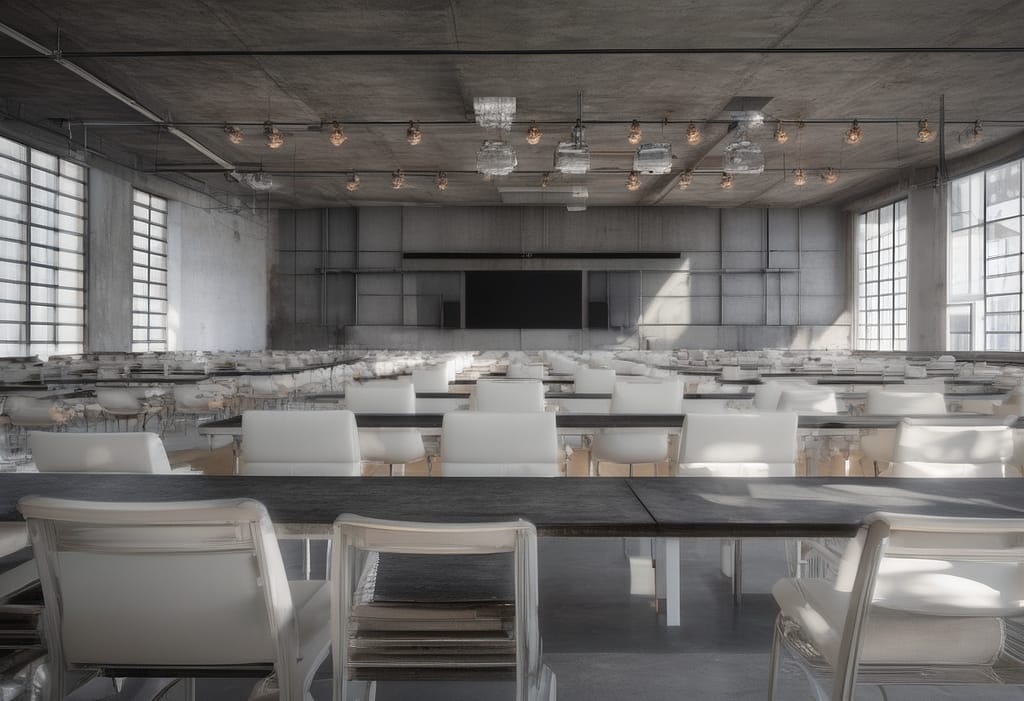Blog
AI Tools for Commercial Interior Design
In the fast-paced world of commercial interior design, the ability to anticipate trends while meeting the diverse needs of clients is paramount. From bustling offices to chic restaurants, and luxurious hotels to sleek ships, every commercial space demands a unique blend of functionality, aesthetics, and brand representation. In this ever-evolving landscape, the integration of Artificial Intelligence (AI) tools is revolutionising the way designers conceptualise, plan, and execute projects.
Enhancing Creativity and Efficiency with AI
AI-powered interior design tools have emerged as indispensable assets for commercial designers. Leveraging sophisticated machine learning algorithms, these tools provide invaluable insights and recommendations tailored to specific project requirements. Notable examples include tools like Morpholio Board and Autodesk’s Generative Design, which empower designers to explore a vast array of styles, colour palettes, and furniture options with ease, inspiring creativity while streamlining the design process.
Streamlineing building design, construction, and maintenance practices
AI tools, like Forma AI, are specifically tailored to support a project’s initial planning and design phase, aiming to alleviate architects’ time constraints and allow them to concentrate on pioneering solutions. Forma facilitates users in swiftly evaluating numerous design alternatives and refining those that most effectively embody the desired features of the design.
Advanced interior design visualisation
Gone are the days of laborious manual drafting and endless revisions. AI-powered tools streamline the design process from conception to completion. Innovative virtual room visualisation platforms, such as ZMO.AI, Room GTP and Planner 5D enable designers to create lifelike 3D renderings of domestic and office spaces.
Before

After

Optimising Space Utilisation and Functionality
Efficient space utilisation is a cornerstone of successful commercial design. AI algorithms, exemplified by tools like SpaceOS and OfficeSpace Software, analyse floor plans and spatial constraints to generate optimised layouts that maximise functionality and flow. From dynamic open-plan offices to intimate dining areas, every square foot is utilised to its fullest potential, enhancing productivity and elevating the overall customer experience.
Budgeting and Procurement Simplified
Managing budgets and sourcing materials can be daunting tasks in the world of commercial design. AI-powered tools like Revit and Planner 5D alleviate these challenges by providing accurate cost estimations and suggesting budget-friendly alternatives. Furthermore, integrated shopping features allow designers to procure furniture, decor, and finishes directly from suppliers, streamlining the procurement process and ensuring timely project delivery.
Embracing Future Trends and Innovations
As AI technology continues to evolve, its impact on commercial interior design is set to expand even further. From predictive analytics that anticipate future design trends to augmented reality (AR) simulations that enable immersive client presentations, the possibilities are limitless. By embracing AI tools, commercial designers can stay at the forefront of innovation, delivering exceptional spaces that captivate, inspire, and elevate the human experience.
In the competitive world of commercial interior design, embracing AI-powered tools is no longer optional, it’s essential. By harnessing the power of machine learning algorithms, designers can unlock new levels of creativity, efficiency, and precision. From personalised design recommendations to streamlined project management, AI tools are reshaping the way commercial spaces are conceptualised and brought to life. As we look to the future, the integration of AI will undoubtedly continue to redefine the boundaries of possibility, ushering in a new era of innovation and excellence in commercial design.



